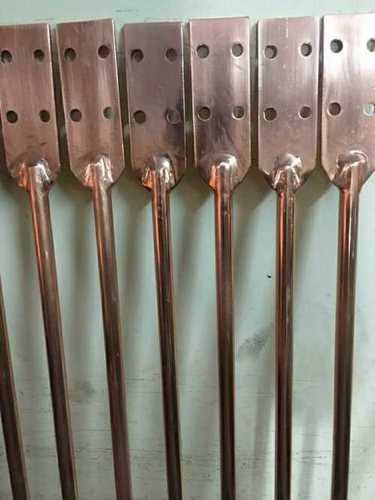Company Information
Ask for more detail from the seller
Contact Suppliercopper bonded earthing rod is a crucial component in electrical grounding systems, designed to safely dissipate electrical currents and faults into the ground. Here are the key aspects and considerations regarding copper bonded earthing rods:
Construction and Materials:Core Material: Typically, the core of the earthing rod is made of high-quality steel. The steel core provides structural strength and durability, allowing the rod to be driven into the ground without deformation.
Copper Bonding: The steel core is bonded with a layer of high-conductivity copper. This bonding process ensures a consistent, low-resistance electrical connection between the rod and the surrounding soil.
Thickness of Copper Layer: The thickness of the copper layer is crucial for ensuring effective electrical conductivity and corrosion resistance. It typically ranges from 250 microns to 300 microns, depending on the manufacturer and standards.
Length: Copper bonded earthing rods are available in various lengths, commonly ranging from 1.5 meters to 3 meters (approximately 5 feet to 10 feet). The length is chosen based on the specific grounding requirements and soil conditions.
Diameter: Standard diameters range from 12.5 mm to 25 mm (approximately 0.5 inches to 1 inch). The diameter affects the grounding system's resistance and the amount of current it can safely dissipate.
Threaded End: The top end of the earthing rod usually features a threaded portion or other connection mechanism. This allows for easy attachment of grounding conductors, clamps, and other components.
Corrosion Resistance: Copper bonding provides excellent resistance to corrosion, ensuring long-term reliability and performance in various environmental conditions.
Installation: Proper installation involves driving the earthing rod vertically into the ground using specialized tools like a driving rod or a hammer drill. The rod should be installed deep enough to ensure good contact with moist soil, which enhances conductivity.
Backfill Material: Surrounding the earthing rod with backfill material (such as bentonite clay or charcoal) helps maintain low-resistance contact between the rod and the soil. This improves the effectiveness of the grounding system.
Testing: After installation, it's important to conduct resistance testing to verify that the earthing rod provides a sufficient path for fault current dissipation. This ensures compliance with safety standards and regulations.
Maintenance: Regular inspection of the earthing rod and its connections is essential to ensure continued effectiveness. Periodic checks for corrosion, damage, or loose connections help prevent grounding system failures.
Copper bonded earthing rods are used in a wide range of applications, including:
In conclusion, copper bonded earthing rods are essential for maintaining electrical safety and system reliability in various applications. Choosing the right size and ensuring proper installation and maintenance are crucial for optimal performance and compliance with electrical standards.




